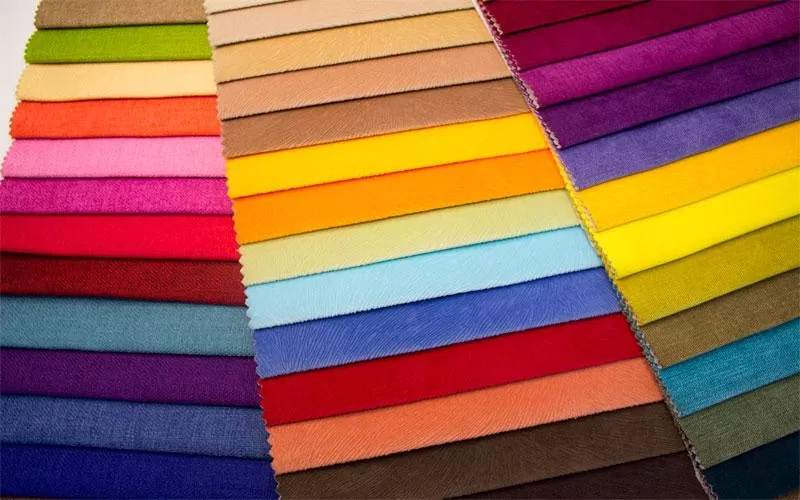
Thigh socks are fashionable and functional. Along with keeping your legs warm, thigh high socks can also help you make a statement with your outfit. But to find the right pair of socks, you need to consider how they’re made. Let’s look at the best fabrics for custom thigh high socks.
Common Fabrics Used in Sock Manufacturing
Socks can be made from a variety of materials, but some are more common than others. Generally, socks will be made from either natural or synthetic materials. Natural fabrics can include cotton, wool, silk, and bamboo. Synthetic fabrics typically include nylon, polyester, or a blend of fabrics. Each has its benefits and drawbacks. It’s important to understand each fabric type, qualities, pros and cons.
Cotton
Cotton is one of the most popular natural fabrics for thigh socks. In fact, most socks are made with fabric that has some percentage of cotton in it. And if you’ve ever owned a pair of white thigh high socks, there’s a good chance that it was made from cotton.
Cotton does have advantages:
- It’s breathable
- It’s natural
- It’s stretchy and comfortable
But it’s also a material that’s not environmentally friendly unless organically grown. Still, cotton is a top choice because it helps keep your feet dry, warm, and comfortable. And if you’re purchasing custom thigh high socks, they’ll likely be made with a cotton blend because cotton absorbs dyes and inks so well.
Wool
Wool is another common natural material used in sock manufacturing because it offers many advantages.
- It’s thermostatic, which means it’s great for temperature regulation and will help keep your feet comfortable.
- It can absorb up to 30% of its weight in water, so your feet stay dry.
- It’s cozy and comfortable and provides cushioning for your feet.
While there are many benefits to wearing wool socks, they do have some disadvantages. For starters, they’re more expensive. They also dry slower than synthetic fabrics. Typically, merino wool is used for socks, but some manufacturers use wool blends or ragg-wool.
Synthetic Materials
Thigh socks may also be made with synthetic materials. While there are many synthetic materials out there, the two most common for socks are nylon and polyester.
Nylon
When it comes to strength and versatility, nylon tops the list. The great thing about this fabric is that it’s so versatile. Socks made from nylon can be bulky and extra stretchy, or they can be thin and silky. Typically, nylon is used with other fibers (like polyester) to add strength and stretch. But this fabric isn’t as comfortable as natural fibers like cotton. Some people find that nylon socks are uncomfortable or even cause irritation.
Polyester
You’ll find plenty of thigh high socks made of polyester, and a lot of the clothing you wear likely has polyester. Polyester is a synthetic material, which makes it an affordable option, but it’s not:
- Breathable
- Moisture-repelling
However, while you lose the socks’ breathability, you gain the sock’s ability to hold colors well and remain very strong. If you plan to wear your thigh highs when it’s warm outside, you may prefer another fabric type.
Silk and Bamboo
Bamboo and silk are two very popular materials in the apparel industry. You’ll find bamboo in many socks because it’s:
- Breathable
- Lightweight
- Soft
Overall, bamboo is a great material and one that can even help with temperature regulation. The problem? It’s not as durable as other materials, so this is a material that’s ideal for formal wear. Silk is soft, lightweight, and great for moisture-wicking. But this material is often used in delicate clothing items because it’s simply not ideal for everyday wear, running, or activewear.
Blend Fabrics
Blends are common, especially in fast fashion, where the main focus is on price rather than quality. A polyester blend is one that can include high-end breathability and the properties of other fabrics, such as the smoothness of silk. But then you have to be concerned about synthetic materials and microplastics, which will wash off.
Factors to Consider When Choosing Fabric
Selecting the right material for your socks is important. Cotton is the go-to fabric of CustomSocks because they are great for moisture-wicking, comfortable, and long-lasting. If you do have multiple sock fabric options that you can choose from, you’ll want to consider the following:
- Eco-friendliness: Is the material sustainable?
- Breathability: Breathable fabrics are ideal because they allow for less moisture in your socks and greater comfort.
- Durability: Socks go through a lot of wear and tear. You want to choose a fabric or blend that can withstand heavy usage. Cheaper fabrics often have holes or stitching that starts to unravel.

Conclusion
White thigh high socks offer an amazing look, but you need to choose the best fabrics for your socks. A low-quality fabric may be cheaper, but it will often rip or get holes faster than a strong material, such as cotton. The important thing is finding the right color and fabric for your custom thigh high socks that express your style.
Leave a Reply